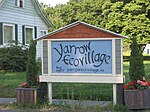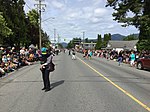Lindell Beach, British Columbia
Populated places in the Fraser Valley Regional DistrictUnincorporated settlements in British ColumbiaUse Canadian English from January 2023Use mdy dates from September 2023
Lindell Beach is a rural farming village in the Columbia Valley of the Lower Mainland region of the province of British Columbia, Canada, lying south of the City of Chilliwack. It is located at the south end of Cultus Lake which is the main waterbody in the Columbia Valley in the South Fraser Valley, and just north of the boundary of the United States. From 2014 to 2019 the area has seen a significant increase in population due to several gated community developments.
Excerpt from the Wikipedia article Lindell Beach, British Columbia (License: CC BY-SA 3.0, Authors).Lindell Beach, British Columbia
Cotton Tail Crossing, Area H (Cultus Lake/Columbia Valley)
Geographical coordinates (GPS) Address Nearby Places Show on map
Geographical coordinates (GPS)
| Latitude | Longitude |
|---|---|
| N 49.033333333333 ° | E -122.01666666667 ° |
Address
Cotton Tail Crossing
Cotton Tail Crossing
Area H (Cultus Lake/Columbia Valley)
British Columbia, Canada
Open on Google Maps





